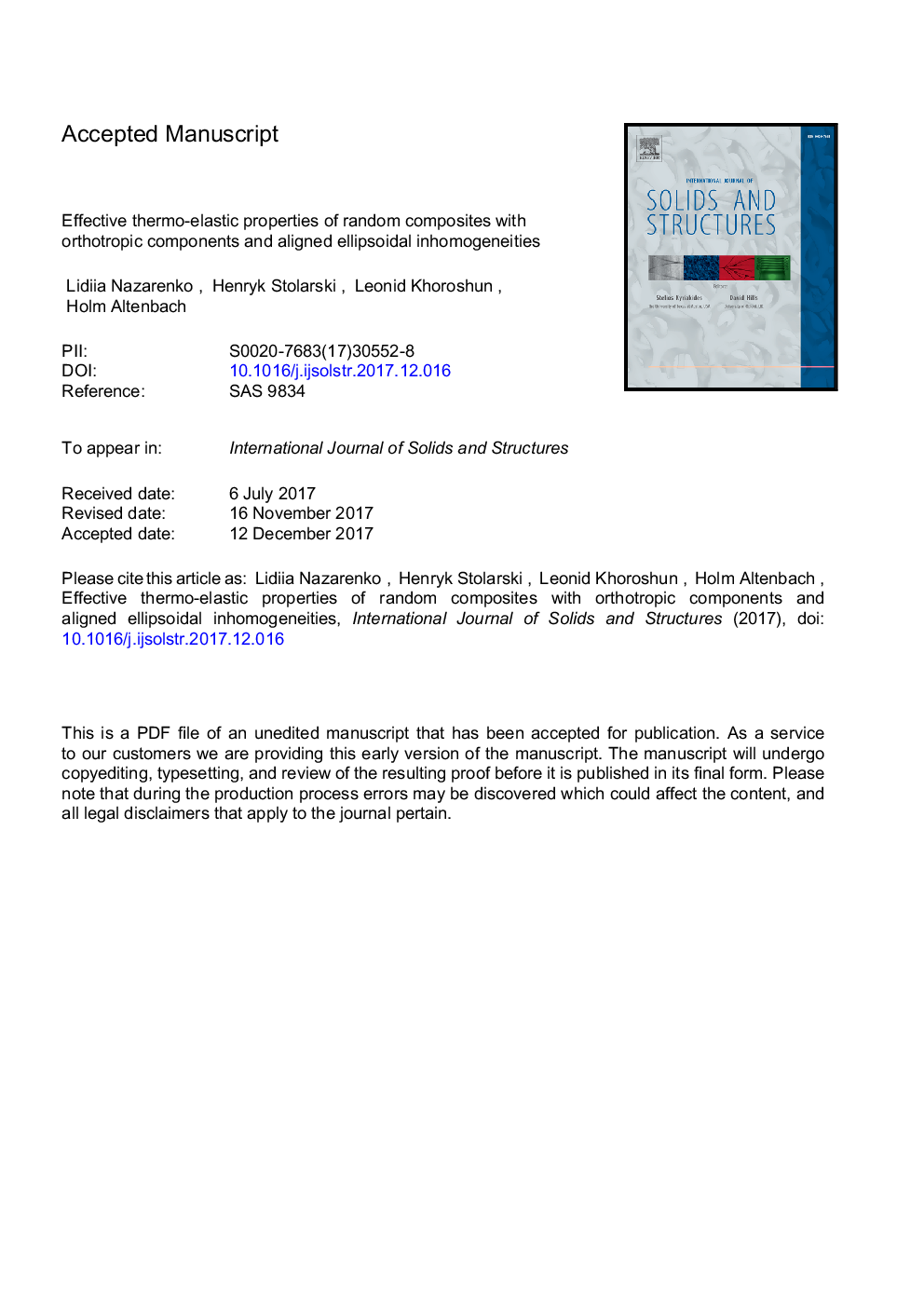| Article ID | Journal | Published Year | Pages | File Type |
|---|---|---|---|---|
| 6748394 | International Journal of Solids and Structures | 2018 | 54 Pages |
Abstract
The details of the method of conditional moments are described in the context of random composites with orthotropic constituents to demonstrate its capability and versatility. To this end a complete set of effective thermo-elastic materials parameters is developed for a two-component matrix composite with randomly distributed unidirectional ellipsoidal fibers. Both constituents of the composite possess orthotropic material symmetry with respect to the axes aligned with the axes of the ellipsoids. The deeper insight into the formal side of the method is facilitated by presenting all particularities of its inner working, which is missing in other contributions on the subject. In particular, the two-point conditional probabilities which characterize shape and distribution of the fibers are developed, and the Fourier transform of the Green's function for orthotropic media has been developed for the first time to evaluate the operations involving the Green's function itself. Finally, transition from the system of the governing differential equations (via a known integral equation) to a system of algebraic equation is carefully outlined. This leads to closed-form, albeit complicated, formulas for the effective properties of composites. As a numerical illustration a composite consisting of epoxy matrix with randomly distributed orthotropic fibers is investigated. Variations of Young's moduli, Poisson's ratios, shear moduli and coefficients of thermal expansion with the fiber concentration, for fixed shape of fibers, are investigated. Comparisons with the results involving special cases of spheroidal or cylindrical fibers, as well as spherical particles, obtained in the past using other methods or via experimental investigations, exhibit a remarkably good agreement.
Keywords
Related Topics
Physical Sciences and Engineering
Engineering
Civil and Structural Engineering
Authors
Lidiia Nazarenko, Henryk Stolarski, Leonid Khoroshun, Holm Altenbach,
